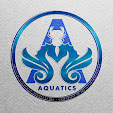What are marine algae?
Marine algae are a diverse
group of photosynthetic organisms. Generally, they live attached to hard rock
and other hard substrate in coastal areas.
Marine Algae which are considered under seaweeds
are mainly divided in to 3 groups;
1.
Red algae (Rhodophyta)
2. Brown algae (Phaeophyta)
3. Green algae (Chlorophyta)
Why we culture marine algae? What are the benefits?
Marine algae have the potential to produce biomass and bio fuel which is a renewable resource. Algae can double their population size every few hours, so they can be harvested daily (fast growth).
• Algae consumes CO2
As any other plants, algae consume CO2 and release O2. But for high productivity algae require more CO2. So, it is favorable to the CO2 balance of the atmosphere
• Algae can have high biofuel yields
Normally algae store energy in forms of oil and carbohydrates. So. they can produce 2000-5000 gallons of biofuels per acre per year
• Algae purify water
They thrive in
nutrient rich waters such as urban waste (sewage), industrial waste, and
effluent animal waste. They purify these waste water and produce biomass
suitable for biofuel production
• Production of many by products
Plastics
Chemical feed stocks
Lubricants
Fertilizers
Cosmetics
• Algae culture is a pool of job opportunities
Methods we use to culture algae
Algae
can be produced according to a great variety of methods, from closely
controlled laboratory methods to less predictable methods in outdoor tanks. The
terminologies used to describe the type of algal culture include:
• Indoor/Outdoor
Indoor culture allows control over illumination, temperature,
nutrient level, contamination with predators and competing algae, whereas
outdoor algal systems though cheaper, make it very difficult to grow specific
algal cultures for extended periods.
• Open/Closed
Open cultures such as uncovered ponds and tanks (indoors or
outdoors) are more readily contaminated than closed culture vessels such as
tubes, flasks, carboys, bags, etc.
• Axenic (=sterile)/Xenic
Axenic cultures are free of any foreign organisms such
as bacteria, but this cultivation is expensive and difficult, because it
requires a strict sterilization of all glassware, culture media and vessels to
avoid contamination. These constraints make it impractical (and very expensive)
for commercial operations. On the other hand, non-axenic or xenic cultivation,
though cheaper and less laborious, are more prone to crash, less predictable,
and often of inconsistent quality.
• Batch, Continuous, and Semi-Continuous
These are the three basic types of
algal culture which will be described in the following sections. The next table
summarizes the major advantages and disadvantages of the various algal culture
techniques.
BATCH CULTURES
The most common culture system is the batch culture, due to its simplicity and low cost. The batch culture consists of a single inoculation of cells into a container of fertilized seawater followed by a growing period of several days and finally harvesting when the algal population reaches its maximum or near-maximum density.
This is a closed system, volume-limited, in which there is no input or output of materials, that is, and resources are finite. The algal population cell density increases constantly, whereas other nutrient components of the culture medium decrease over time until the exhaustion of some limiting factor. Any products produced by the cells during growth also increase in concentration in the culture medium.
Once the resources have been utilized by the cells, the cultures die
unless supplied with new medium. In practice this is done by sub culturing,
that is, transferring a small volume of existing culture to a large volume of
fresh culture medium at regular intervals prior to reaching the stationary
phase and the larger culture volumes are then brought to a maximum density and
harvested.
Batch culture systems are widely applied because of
their;
•
Simplicity and flexibility
•
Allowing to change species
•
To remedy defects in the system rapidly
Although
often considered as the most reliable method, batch culture is not necessarily
the most efficient method.
Disadvantages
• Batch cultures are harvested just prior to the
initiation of the stationary phase and must thus always be maintained for a
substantial period of time.
• The quality of the harvested cells may be less
predictable than that in continuous systems and for example vary with the
timing of the harvest.
• Another disadvantage is the need to prevent
contamination during the initial inoculation and early growth period. Because
the density of the desired phytoplankton is low and the concentration of
nutrients is high, any contaminant with a faster growth rate is capable of
outgrowing the culture.
• Batch cultures also require a lot of labor to
harvest, clean, sterilize, refill, and inoculate the containers.
Continuous culture
The continuous culture method, (i.e. a culture in
which a supply of fertilized seawater is continuously pumped into a growth
chamber and the excess culture is simultaneously washed out), permits the
maintenance of cultures very close to the maximum growth rate. Two categories
of continuous cultures can be distinguished:
• Turbid stat culture, in which the algal
concentration is kept at a preset level by diluting the culture with fresh
medium by means of an automatic system.
• Chemo stat culture, in which a flow of fresh
medium is introduced into the culture at a steady, predetermined rate. The
latter adds a limiting vital nutrient (e.g. nitrate) at a fixed rate and in
this way the growth rate and not the cell density is kept constant.
The disadvantages of the continuous system are its relatively high cost and complexity. The requirements for constant illumination and temperature mostly restrict continuous systems to indoors and this is only feasible for relatively small production scales. However, continuous cultures have the advantage of producing algae of more predictable quality. Furthermore, they are amenable to technological control and automation, which in turn increases the reliability of the system and reduces the need for labor.
Written by: W.K.N. Shyamini
References:











0 comments:
Post a Comment